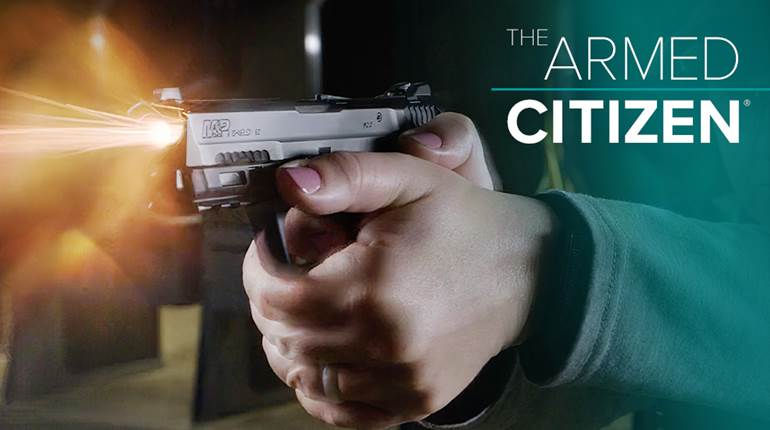
There are few things that I enjoy more than handloading ammunition. What started as a simple economic measure blossomed into a passion for accuracy and a quest to fire some of the most hard-to-find ammunition. While I can handload nearly anything that was once fired, I learned first to question whether or not I should. I have spent countless hours at the bench rolling off my own range fodder, only to come to the conclusion that the entire endeavor was nothing more than a waste of time and resources. Here are five instances where I don’t consider handloading to be worth the trouble:
1: The Ammunition Isn't Used Often

Once we have a loading bench up and running, it’s tempting to buy a set of dies to make ammunition for every gun we own. With the major investment behind us, it only seems logical to get as much bang for our buck as possible. So why not? Well, once you figure in the price of components to conduct load development, and the sheer amount of residual investment that will sit on the shelf, it might not make sense to build rounds for something that you’re only going to fire a dozen times a year. I, for one, don’t reload for my hunting rifles. Instead, I find a round each one likes and then set aside a few boxes. Considering I only fire a three-shot group to confirm zero and then maybe two shots when afield per season, a standard 20-round box of ammunition lasts me at least four years. If stored properly, these rounds will last indefinitely, so there’s no harm in purchasing larger quantities when the price is right either.
2: The Rounds Are Inexpensive

When the ammunition market is good, it's important to calculate in your time investment before setting out for a voluminous ammunition-production run. Although making range fodder doesn’t pull us away from earning a salary, it does keep us from enjoying other things in life. Many years ago, I spent a three-day weekend churning out 9 mm Luger loads, later realizing that I’ve only saved a minimal amount during the process. If I trimmed back another expense that year, even just a bit, that could have been an extra weekend camping, fishing or even traveling to one of those out-of-state matches I’ve been trying to make. This phenomenon isn’t limited to metallic cartridges either; most retired 12-ga. shotshell loaders will attest that the recent boost in the price of lead has pushed them back to dealer shelves to resupply their favorite scatterguns.
3: Some Guns Won’t Notice It

While it’s true that handloads can be tuned to provide accuracy that exceeds factory munitions, not every gun will see these effects. This statement is intended to resonate with the surplus-rifle collectors among our ranks, as well as those of us that enjoy taking well-used heirlooms to the range. Some rifles just weren’t designed to be sub-m.o.a. performers or have experienced wear beyond their serviceable life. In these instances, even the most carefully crafted ammunition will yield unsatisfactory results. For firearms like these, it is better to accept them as they are, instead of chasing an imaginary dragon down a rabbit hole. Sometimes picking a different rifle to hunt with or hanging a larger piece of steel downrange makes more sense and might even preserve your sanity.
4: Some Cartridges Are Hard To Make

Speaking of sanity, reloading isn’t always a relaxing experience, and I’ve found myself regretting decisions that I’ve made while bellied up to the bench. Some cartridges are just extraordinarily hard to load in either the process, development or both. As I write this, I am reminded of a project that I undertook, handloading 5.7x28 mm. This minuscule bottlenecked round leaves the factory with a polymer coating to aid in cycling, and it needs to be respected. These cases must be cleaned by hand, as mechanical methods can remove enough of it to cause feeding issues. If you successfully remove the fouling without taking off the polymer, your next step is to resize each case. Again, this must be done carefully, as it is easy to disturb the headspace. After sizing and re-priming are complete, a precise charge must be funneled through the 0.224” case mouth, and you have less than 28 mm worth of case to hold on to. In other words, expect to fumble. For those that suffer from dexterity issues, this cartridge is most likely a nonstarter. Don’t get me wrong, I still keep my brass, but handloading it is a last resort.
5: You're Planning To Use It For Self-Defense

This one might just be the most tempting on the list, but I assure you, it’s not worth it. A prospective defensive ammunition handloader might be somebody who is in the practice of consistently rotating out expensive carry rounds to assure reliability (which is a good practice). Considering how even jacketed hollow-point rounds can be made for pennies on the dollar, it seems like a great idea at first glance. However, factory ammunition comes with an added value: a liability shift. Major manufacturers have run their products through extensive legal considerations and are prepared to handle anything that might come up through its use. Should you use your homemade ammunition in a life-or-death encounter, you might have to prove that you didn’t make it any more lethal than something commonly available at a sporting-goods store. Self-defense ammunition is expensive, but not nearly as expensive as paying a lawyer for the extra time to (hopefully) prove that you didn’t fire anything “enhanced” on the day of the incident.
Gun ownership is supposed to be enjoyable, and it’s easy to lose track of why we spend all that time at the range, out in the field or even just relaxing at our reloading bench. Before giving up range time or other pursuits to sit at the reloading bench, ask yourself if it is worth it or even if it’s a good idea. If the answers are no, then it's best to stop at your local sporting-goods store, pick up a few boxes of factory ammunition and enjoy some quality time with your precious firearms.























![Winchester Comm[94]](/media/1mleusmd/winchester-comm-94.jpg?anchor=center&mode=crop&width=770&height=430&rnd=134090756537800000&quality=60)
![Winchester Comm[94]](/media/1mleusmd/winchester-comm-94.jpg?anchor=center&mode=crop&width=150&height=150&rnd=134090756537800000&quality=60)












